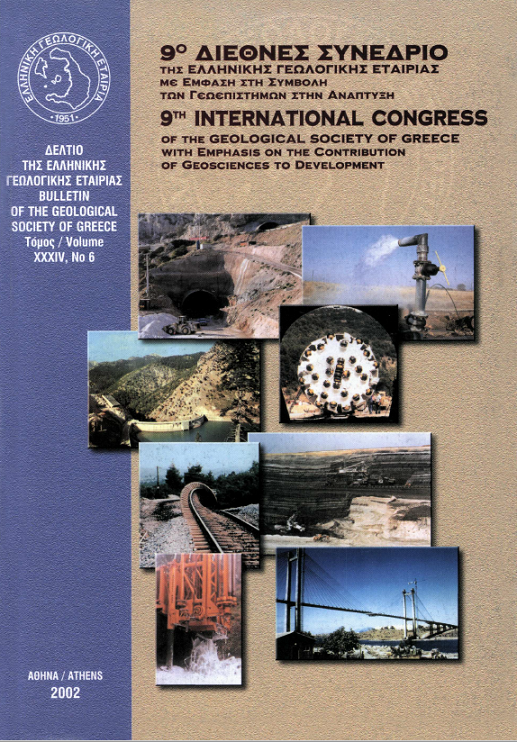A NEW INTERPRETATION OF THE STRUCTURE OF INTERNAL HELLENIDES
Abstract
This study is based on some new observations made from Southern and Central Evia, Argolis and North-central part of Pindos. Our observations lead us to adopt a simplified view of the paleogeography of Greek mainland just before the Alpine orogeny. The subsequent varied tectonic units originate mainly from the following paleogeographic areas:
• A carbonate Arab-African shelf margin which displays several lateral transitions, ridges and basins. In the Greek mainland this margin is represented by the Preapulian, Ionian, GavrovoTripolis, Parnassos zones, Olympus platform and probably the Kavala and Thassos Marbles.
• A transition zone from the shelf units to the Tethys ophiolites (Pindos Zone, Styra, Argolis and Hydra, Eretrias new unit).
• Tethys ophiolites, which might represent an “ocean” fault zone or subduction of lithosphere along a weak zone.
• An Hercynian continental mass (Servomacedonian).
Article Details
- How to Cite
-
Argyriadis, I., Midoun, M., & Ntontos, P. (2010). A NEW INTERPRETATION OF THE STRUCTURE OF INTERNAL HELLENIDES. Bulletin of the Geological Society of Greece, 43(1), 264–275. https://doi.org/10.12681/bgsg.11179
- Section
- General and Structural Geology

This work is licensed under a Creative Commons Attribution-NonCommercial 4.0 International License.
Authors who publish with this journal agree to the following terms:
Authors retain copyright and grant the journal right of first publication with the work simultaneously licensed under a Creative Commons Attribution Non-Commercial License that allows others to share the work with an acknowledgement of the work's authorship and initial publication in this journal.
Authors are able to enter into separate, additional contractual arrangements for the non-exclusive distribution of the journal's published version of the work (e.g. post it to an institutional repository or publish it in a book), with an acknowledgement of its initial publication in this journal. Authors are permitted and encouraged to post their work online (preferably in institutional repositories or on their website) prior to and during the submission process, as it can lead to productive exchanges, as well as earlier and greater citation of published work.





